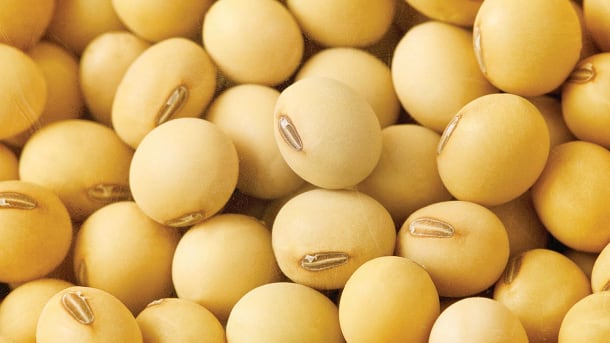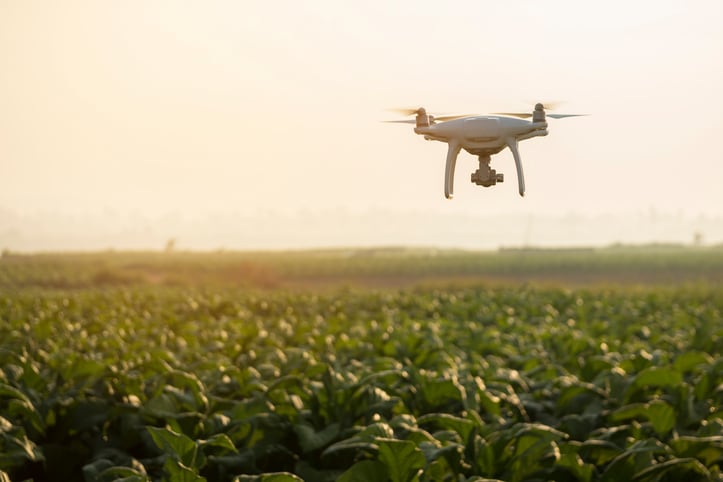President of the Round Table on Sustainable Soy (RTRS) since 2017, Marina Born is also managing director of two soy suppliers - Argentinian agri-livestock firm Caldenes Agropecuaria and Uruguayan Granicor and, in her own words, an "evangelist" for responsibly grown soy.
Created in 2006, RTRS brings together 190 members from across the stakeholder spectrum – producers, processors, manufacturers, retailers and NGOs – with the aim of making global soy production responsible.
“We started as an RTRS soy producer almost 8 years ago in Argentina so I’ve seen [the standard] evolve and grow," she said. "I think it’s a very good way of producing and I’m a bit of an evangelist here [convincing] producers to take the reins and produce in this manner.
“I also see the difficulties producers have and how hard it is with the governments in this part of the world. It isn’t simple but producing in a sustainable manner is still feasible for both big and small farms.”
'RTRS trains you how to do things better'

In addition to premiums farmers receive for certified soy, there are indirect financial incentives, for instance.
“Managing a farm is all about managing risk, and when your procedure is meticulous, calculated and disciplined, it helps you to manage those risks.
“In our case, for instance, we used to have accidents with [farmworkers] and when we implemented RTRS, it dropped to almost nothing, meaning our insurance costs also dropped.
“RTRS trains you how to do things better and that obviously has implications in a number of areas; it lowers the cost of seeds, fertilizer and chemicals because you are using them properly.”
However, these benefits are often only obvious to the farmers who have already made the switch to sustainable soy farming, Born said.
RTRS, therefore, runs farmer-to-farmer outreach programs during which certified producers talk to conventional ones.
“It’s a way for them to speak to peers, which [makes it] more credible for them.”
Which Latin American suppliers offer fully certified and traceable sustainable soy?

Uruguayan tax breaks 'really help'
Becoming certified takes around two years and in some countries, such as Uruguay, the government helps cover the costs.
“That really helps. We [Granicor] became RTRS producers in Uruguay last year and it was all paid for by this tax incentive program.
“We [at RTRS] are also pushing for [a similar scheme] in Brazil, Argentina, and Paraguay.”
Although aware of the Uruguayan program, the governments in these countries are “still not there”, Born said.
Although government support helps encourage uptake, it is not essential, she added.
“That’s my perspective because, in Argentina, the government has not been helpful at all but [certified acreage] has grown, so it’s all relative.”
The approach in Brazil, meanwhile, is much more local, with municipalities and regions working together to take a jurisdictional approach.
“Even though it’s a country, Brazil is a bit like a sub-continent - like India - in the way its municipalities and states have a lot of power – more than the federal government in many places, especially places that are more ‘virgin’ or wild,” Born said.
“The municipalities are seeing the benefits of RTRS, not only in production but also in their communities. They have become the flag bearers and that’s what we need to strive to continue.”
Bridging the gap between supply & demand

Convincing farmers to grow sustainable soy is just one side of the coin, however.
There is currently a supply and demand mismatch, with more sustainable soy being produced that is sold.
“Things are picking up across the world, sustainability is a trend and both demand and production are growing, although production is growing more," Born admitted. "That’s what we need to match.

“Part of the problem is that soy is a product within a product so it’s hidden. But it is used in milk, beef, chocolate, cosmetic creams, even in medicine,” Born said.
Being a hidden ingredient, soy does not attract as much consumer attention as, say, palm oil.
“People aren’t aware of the large penetration it has. That’s something we need to work to overcome. For example, retailers can explain so people know where soy is being used.”
The amount of certified sustainable soy today is still a very small amount – between 2 and 3% of global production.
According to RTRS, however, this is growing “tremendously”.
“Demand is growing because we live in a global economy,” said Born. “When global companies such as Unilever and Nestlé or retailers like Carrefour have a global sustainable sourcing commitment, it’s not just in Europe or Switzerland but all over the world, including Latin America. Even China is demanding sustainable soy more for feed because they also sell their pigs in other countries."
Latin America is not a major buying market for sustainable soy although some Chilean aquaculture companies are customers. Los Fiordos, Biomar Chile and Chilenos Vitapro all buy RTRS-certified soy for their fish feed.
RTRS operates a certified physical model (both mass balance and segregation) and a credit system.
A farmer who grows 100 tons of RTRS-certified soy can sell it in two ways.
The first is through a credit system where 100 tons of soy equals 100 credits. A food manufacturer buys 100 RTRS credits rather than 100t of the physical commodity and then buys the soy elsewhere. In this way, it is contributing to demand for sustainable soy.
“The idea behind this system is to create critical mass for the market,” said Laura Villegas, communications officer at RTRS.
The second way to sell RTRS-certified soy is physically through a mass balance system or, for non-GMO, a segregated system. The purchase of RTRS physical soy involves RTRS chain of custody certification and, therefore, traceability.
In both purchasing models, members use an RTRS trading platform that connects suppliers and buyers and allows them to negotiate the price.
“The platform is a way to connect and link supply and demand and also trace the physical flow, [either] mass balance or segregated soy,” added Villegas.
This article was amended on 7 March to make it clear both RTRS mass balance and segregated soy can be physically traced throughout the supply chain.


